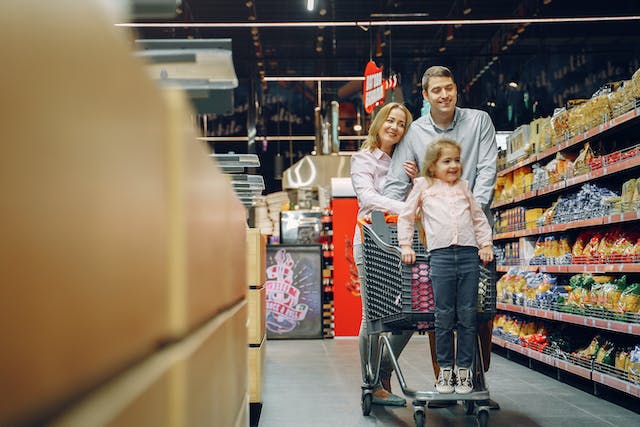Seasonal Sustainability: Adapting Kids’ Wardrobes to Environmental Changes
As the seasons transition and environmental changes become more prominent, it’s essential for parents to consider the sustainability of their kids’ wardrobes. With a focus on adapting to these changes, there are creative and eco-friendly ways to ensure that children’s clothing aligns with the principles of environmental preservation and conservation.

Understanding Seasonal Environmental Changes
As the seasons shift, it’s vital for parents to consider the impact on their kids’ clothing needs and the environment. With a focus on eco-friendly fabric choices, parents can creatively adapt to these changes and ensure that their children’s clothing aligns with principles of environmental preservation and conservation.
Impact on Kids’ Clothing Needs
The changing seasons can have a significant impact on the clothing needs of children. As the weather shifts, kids require different types of clothing to stay comfortable and protected. From lighter, breathable fabrics for summer to warm, cozy layers for winter, it’s important to be mindful of these changing needs when considering sustainability in their wardrobes. This awareness can help in making informed choices about the types of clothing items kids require throughout the year, ensuring they are prepared for any weather while staying eco-conscious.
Eco-Friendly Fabric Choices
When choosing fabrics for kids’ clothing, it’s important to consider the environmental impact. Opt for organic cotton which is free from harmful chemicals and pesticides. Additionally, hemp is a sustainable choice due to its low water and pesticide requirements. Bamboo is another eco-friendly option as it grows quickly and requires minimal resources. These fabric choices not only benefit the environment but also ensure that kids’ clothing is safe and comfortable to wear.
Practical Strategies for Seasonal Wardrobe Adaptation
When it comes to adapting kids’ wardrobes to environmental changes, practical strategies play a crucial role. By implementing these strategies, parents can ensure that their children’s clothing aligns with eco-friendly practices and contributes to sustainability. Practical strategies for seasonal wardrobe adaptation can include wardrobe rotation and reuse, as well as DIY clothing upcycling. These approaches not only reduce environmental impact but also encourage creativity and resourcefulness in children.
Wardrobe Rotation and Reuse
When it comes to adapting kids’ wardrobes to environmental changes, wardrobe rotation and reuse are key. Instead of constantly buying new clothes, consider rotating seasonal items from previous years. Encourage your children to mix and match their clothing to create new looks, promoting creativity and reducing the need for new purchases. By embracing the concept of reuse, you not only reduce waste but also teach your children the value of sustainable practices.
DIY Clothing Upcycling
When it comes to seasonal wardrobe sustainability, DIY clothing upcycling can be a fun and creative way to repurpose old garments into something new and trendy. By using simple sewing techniques, fabric dyeing, or adding embellishments, parents and kids can transform old clothes into refreshed, one-of-a-kind pieces. Not only does this help reduce textile waste, but it also encourages a sense of individuality and resourcefulness in children. Upcycling also presents an opportunity for parents and kids to bond over a shared eco-friendly activity, making it a win-win for both the environment and family relationships.
Benefits of Sustainable Kids’ Wardrobes
When it comes to choosing eco-friendly clothing options for children, the benefits are numerous. Not only does it reduce the impact on the environment, but it also instills a sense of responsibility and mindfulness towards sustainable living in the younger generation. Embracing sustainable wardrobes for kids can lead to a positive ripple effect, creating a brighter future for both our children and the planet.
Reduced Environmental Footprint
When we choose sustainable fabrics and opt for wardrobe rotation and reuse, we contribute to reducing the environmental footprint created by the fashion industry. By investing in high-quality clothing that can withstand multiple seasons, we decrease the demand for fast fashion, which ultimately reduces the amount of textile waste and the carbon footprint associated with the production and transportation of new clothing. These mindful choices can lead to a significant decrease in the environmental impact of our children’s clothing.
Promotion of Eco-Conscious Mindset
Encouraging an eco-conscious mindset in kids through sustainable wardrobes has far-reaching benefits. It instills a sense of responsibility and teaches them the value of protecting the environment. By involving them in decisions about clothing choices and explaining the impact of those choices, children learn to make mindful decisions that can positively affect the planet. This approach sets the stage for them to become environmentally conscious adults, ensuring a brighter future for the planet.
Community Involvement and Awareness
When it comes to sustainable practices for kids’ wardrobes, community involvement and awareness play a crucial role. Engaging with local suppliers and supporting businesses that offer eco-friendly clothing options can make a significant impact. Additionally, sharing sustainable practices and knowledge within the community can create a ripple effect, inspiring others to make environmentally conscious choices for their children’s clothing as well. This collaborative effort not only benefits the local community but also contributes to the larger goal of preserving our planet for future generations.
Local Sourcing and Support
When it comes to building a sustainable wardrobe for kids, local sourcing and support play a crucial role. By purchasing clothing items from local businesses and artisans, you can reduce the carbon footprint associated with transportation and support the local economy. Additionally, local sourcing encourages a sense of community and connection, as you become more aware of the people and processes behind the clothing your children wear. This not only supports local businesses but also ensures that the clothing is produced under ethical and sustainable conditions, aligning with your environmental and social values.
Sharing Sustainable Practices
When it comes to sustainable practices for kids’ wardrobes, sharing knowledge within the community is crucial. Parents can organize or participate in community events to share tips on eco-friendly clothing choices, upcycling techniques, and ways to reduce textile waste. By collaborating and spreading awareness, everyone can contribute to a more sustainable future for our children and the planet. Together, small sustainable actions can create a big impact.
Conclusion
Adapting kids’ wardrobes to seasonal sustainability not only serves the greater environmental good but also fosters a sense of responsibility and creativity in the younger generation. Taking simple steps to address their clothing needs in environmentally friendly ways has a lasting impact, creating a brighter future for our children and the planet.


